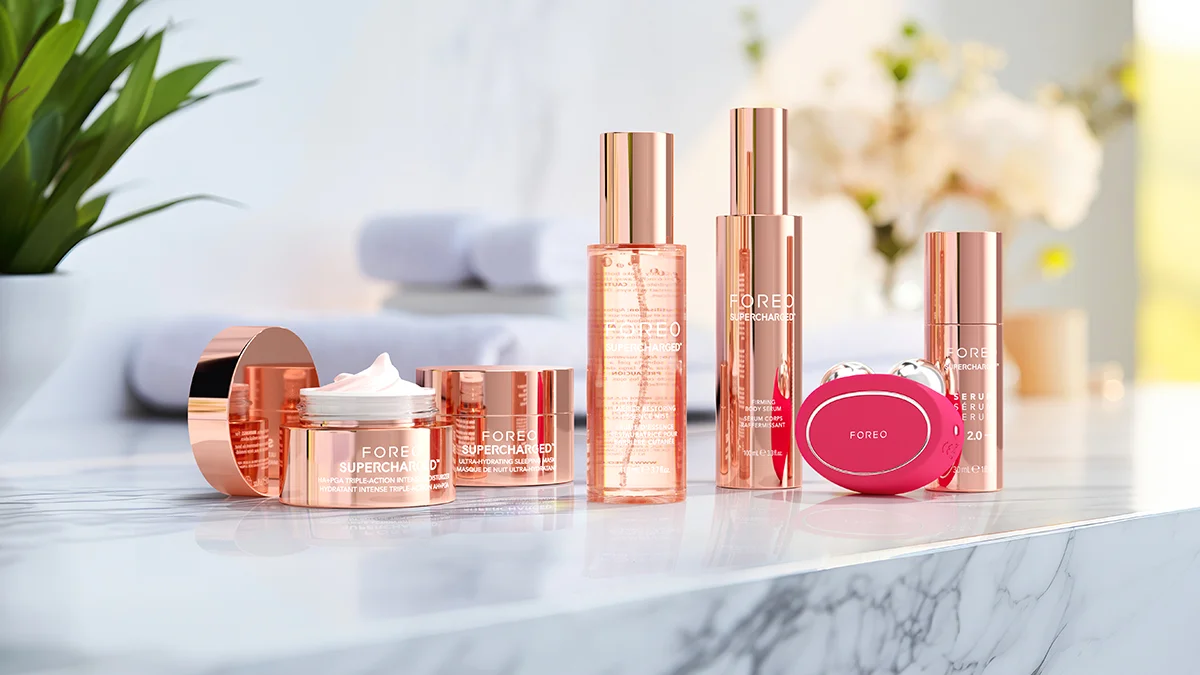12 min read
Behind the Barrier: Understanding The Skin’s First Line of Defense

Introduction
Once upon a time, there was a skin that had a huge fight with its barrier and decided to call it quits. The skin expeditiously divorced the barrier in the court of harsh cleansers, punishing exfoliators and its unfair Honour of dehydration and UV injustice. This, of course, never happened. No skin would do such a thing willingly, because a life without a skin barrier is basically a death sentence to young, fresh, and taut skin. Let’s presume we'd love to keep the perky freshness for as long as possible, regardless of our production date.
The skin barrier, often referred to as the "stratum corneum" by the lab coats, is present all over the body and becomes exponentially more important the thinner the skin and the more the skin area in question is exposed to the elements, unprotected by a physical barrier such as clothing. The face and hands are among the areas that heavily rely on a healthy skin barrier, as they remain mainly uncovered for a large part of the year in most cultures, and facial skin has some areas of very fragile, delicate skin, such as around the eyes.
Skin barrier is exactly what it says it is - a protective shield standing between the skin and the world, yelling “You shall not pass!” into the winds of life, (sort of) literally. Its job is to serve and protect by guarding against harmful environmental effects, such as pollutants, UV rays, and bacteria, while also locking in moisture, a task no less important than the previous one. The skin barrier is where you end and the “outside of you” begins. When this barrier is compromised, it can lead to skin issues like dryness, irritation, breakouts, and even premature aging. Since “ain't nobody got time for that”, we’ll expeditiously explore the signs and symptoms of a damaged skin barrier, the best cosmetic and natural methods to repair it, and recommend effective products. So, how to repair your skin barrier? Put some moisturizer on and let’s find out.
What Is the Skin Barrier and Why Is It Important?
A totally basic question - What is your skin barrier? - has an equally basic, entry-level answer to be kind to our readers who are just setting sail on learning more about skincare. The skin barrier is the outermost layer of skin, and it plays a crucial role in protecting you from environmental stressors like air pollution, wind, heat, extreme cold, bacteria, viruses, fungus, and all sorts of unfriendly pathogens we pick up from just existing in a non-sterile space. Skin barrier also helps retain moisture by an interwoven web of skin cells and lipids (fats) to prevent dehydration and keep the essential moisture locked within the skin. When the skin barrier is intact, your skin remains smooth, hydrated, resilient, and ready to face challenges without flinching.

However, the protective function becomes less effective when the impermeable fortress starts showing weak spots due to overexfoliating, harsh products, or any number of destructive external factors. A damaged skin barrier is no fun at all. It leads to moisture loss, resulting in dry, uncomfortably tight, and sensitive skin that overreacts to anything and does not effectively channel its inner no-drama llama. This also increases the risk of irritation, inflammation, and breakouts, and we all know that growing older is basically drying out. We need our moisture.
How to Know If Your Skin Barrier Is Damaged?
It's all fine and dandy to know what a skin barrier does and what its damage means in the big picture, but how to know if your skin barrier is damaged? Information is the propelling force moving us forward. While it may sometimes be hard to discern accurate from fake information, luckily, skin barrier damage will manifest in real physical signs on your skin, and the sooner you catch it, the easier it will be to fix. Don't you just love a good solid fact? So, what does a damaged skin barrier look like?
Common symptoms of a damaged skin barrier include:
Dryness: Your skin feels tight, like it is a number too small, and lacks moisture, even after applying moisturizing products. The moisture just won’t stick. It can’t if the lipid layer of the barrier is decimated.
Redness and irritation: Mind the change. If your skin has always been very reactive this point might not be a good sign of a damaged skin barrier. But if the skin gets inflamed, irritated, and more sensitive than usual suddenly, or it is getting progressively worse, this is a good pointer to barrier damage.

Flakiness: The unattractive layer of dead, flaky skin sloughing off the surface, leading to a rough texture, loss of radiance, and a dull and tired look.
Sensitivity to products: Products you have used regularly without problems or reactions start to create problems, and your skin responds adversely. You may feel unpleasant stinging or burning sensations.
Breakouts: Ah, the final hit to your damaged, tired skin—a spectacular out-of-control breakout. A damaged skin barrier can lead to problems with sebum regulation, clogged pores, and acne formation.
In addition to external factors that can lead to a damaged skin barrier, such as over-exfoliation (mechanical or chemical), harsh skincare, scorching hot showers, and environmental pollutants, internal factors like stress, poor diet, and lack of sleep can make all skin issues worse. Skin is the canvas that shows us what’s happening inside the body, and it would be wise to pay attention.
How to Repair Skin Barrier: Mainstream Methods
Repairing a damaged skin barrier can happen in multiple ways, be it by mainstream cosmetic interventions, natural methods, the combination of both, or just waiting it out until the skin repairs itself, which is not recommended. The longer the barrier remains impaired, the greater the chance of more permanent damage. So it is a good idea to react as soon as you notice problems and give your skin a nudge to heal. Skin barrier repair requires time, consistency, and some know-how. Here’s some expert advice on how to get out of the way and support the healing process:
You can’t overhydrate
Keep adding moisture any chance you get. Dryness makes all other damage symptoms much worse, and moisturizing is key to barrier repair. When choosing moisturizers for barrier repair, always look for those rich in ceramides, fatty acids, and squalane. These will help support the skin's natural barrier, act on its behalf until it heals, and help lock in the moisture you chronically lack.
Go for Gentle Cleansers
We all love the feeling of a deeply squeaky, clean, and fresh face. But your face shouldn’t be squeaky. You should remove dirt, makeup residue, and excess sebum without getting to the point of no natural protection left on the skin. Opt for gentle, non-foaming products free from harsh sulfates and fragrances. Rough cleansers strip away protective and softening natural oils from the skin, further compromising the already struggling skin barrier. Look for creamy or oil-based gentle cleansers that respect your skin’s integrity or find ones for very sensitive skin that have no potential irritants.
Avoid Over-Exfoliating
While we all sometimes feel like our skin is dull and lifeless, lustre trapped under layers of dead skin cells that serve no purpose anymore, too much of a good thing is not necessarily good. Yes, exfoliating can remove dead skin cells and allow fresh, new cells to come to the surface, giving you a renewed, healthy glow and improving skin texture and tone. Still, excessive exfoliation can strip the skin and weaken the skin barrier. Exfoliation could be done via mechanical means, such as scrubs with granules, loofahs, or mittens, but also by chemical exfoliants. Use them both sparingly. Limit exfoliation to once or twice a week, don’t apply too much mechanical pressure, and choose mild exfoliants with gentle acids (like lactic acid or lauric acid).
Daily Sunscreen
I know we’re repeating ourselves, but look, the Sun is basically a ginormous nuclear reactor, and UV rays are radiation. Staying out of the sun and using sunblock means protecting your skin from radiation damage. Various skin tones have different capabilities of natural sun protection. A very fair-skinned person could maybe stand 10 minutes of direct midday sun before damaging the skin, and a very dark skin tone could go up to 60 minutes, but no more. We all need sunscreen, especially with prolonged exposure and in the sunnier part of the year. Always apply a broad-spectrum sunscreen (SPF 30 or higher) to protect the skin barrier from UV damage as UV rays are very good at breaking down your barrier.

Be Mindful of Stress and Sleep
Some things in this life are foundations and priorities for so many aspects of health that it is mindboggling that we don’t have primary school classes teaching kids about the axis of healthy and vital bodies. Stress and lack of sleep hygiene are among these. Have you ever had a few days of an extremely stressful situation that, in turn, disrupted your sleep or sleep quality? How did you look and feel, just a few days in?
Mental and emotional health and immune function aside, chronic stress and sleep deprivation break the skin’s ability to repair itself. Find what amount of sleep works best for you and stick to it religiously whenever possible. Stress is an unavoidable fact of life, and you’ll be forever changed once you understand what helps you wind down. Meditation, deep breathing, or exercise may work for some, but you may like to read, talk to cats, or paint fantasy landscapes. Whatever works, do it.
Smart skin-tech devices
What started as a slow progress through the (sometimes deadly) history of skincare ended up in a technological revolution that is growing exponentially as new non-invasive technologies enter our skincare routines, growing ever more effective and adaptive to individual skin needs. When it comes to skin barrier healing, gentle but intense glass skin masks work precisely by repairing the barrier to give you the best skin of your life, naturally. There's also the latest craze of the extremely effective LED masks or hand-held LED skincare devices to restore the balance and address so many common skin concerns, including calming down the hyper-reactive skin with a damaged barrier.

How to Repair Skin Barrier Naturally
If you’re trying to avoid commercial products for any reason and wish to rely purely on nature, there are some things to try to speed up skin barrier repair. There are effective natural ways to nourish and repair without relying solely on “artificial” skin barrier repair products:
Natural Oils
Skin, hair, and nails love natural oils, and we can use them to address various concerns in natural but concentrated ways. For skin barrier damage, jojoba, castor, argan, baobab oil, and rosehip oil are excellent choices because they are rich in fatty acids and vitamins that help repair and nourish the skin. They’re also great occlusives, outstanding at sealing in moisture and providing a protective layer while your skin can’t defend itself.
Diet and Omega-3 Fatty Acids
If you are going to hit the surface with topical applications, we suggest speeding up your recovery by simultaneously replenishing the body from within so it can rebuild and protect itself. A diet rich in omega-3 fatty acids, antioxidants, collagen sources, and anti-inflammatory foods like avocados, berries, and leafy greens can improve skin state, barrier resilience, and skin health. These foods help support the skin's structure on the most basic level, from basic building blocks upwards, and protect it from damage.
Probiotics for Gut Health
Isn’t it funny how all large problems can in part be traced to something seemingly small and insignificant? We used to think that a gut microbiome was there just to aid digestion and serve some vague immune function but now we know that the health of the gut bacteria is one of the fundamentals for a vital body we like to live in - spanning immunity, mental health effects, cardio vascular, health as well as skin. Incorporating probiotics into your diet, through delicious and versatile foods like yogurt, kimchi, or kefir, can improve gut health, which is closely linked to skin health. A balanced gut microbiome can help reduce inflammation and improve the skin’s ability to heal.
How Long Does It Take to Repair the Skin Barrier?
The time it takes to repair your skin barrier can vary depending on the severity of the damage. Is it just compromised, or are we looking at full-fledged carnage with breaches everywhere? For some minor damage caught early, you may start seeing improvements as fast as within a few days. More significant damage or complete barrier stripping that presents with persistent redness or flakiness could take several weeks or even months to recover fully. The good news is you basically get new skin each month, so don’t despair if you don’t see improvement in a few days. They will happen, but the time will be proportional to the severity and longevity of the damage.

We are all different, and factors like age, your general health, and skin care consistency play a role in how quickly your barrier will repair. For example, cell turnover and regeneration slow down as we age, so a 20-year-old over-exfoliator anonymous may need two weeks to fix the damage that will take a 50-year-old a month.
Best Skin Barrier Repair Products
To support your skin barrier repair, here are some products to consider:
Moisturizers: Look for (preferably high percentage of natural-origin ingredients) products with ceramides, fatty acids, and hyaluronic acid to help restore moisture and strengthen the skin barrier.
Product recommendation:
SUPERCHARGED™ HA+PGA Triple-Action Intense Moisturizer
- Clinically proven to increase skin moisture by 40% in just 15 mins.
- Hydrating Hyaluronic & Polyglutamic Acids help draw and seal moisture into skin cells.
- Nourishing Squalane helps reduce water loss and minimize the appearance of fine lines and wrinkles.
- Moisturizing Panthenol hydrates skin while helping to strengthen the skin barrier.
- Antioxidant Vitamin E helps fight against free-radical damage.
SUPERCHARGED™ Barrier Restoring Essence Mist
- 2% Niacinamide to brighten & revive dullness
- A blend of 9 Peptides that firm & plump to help improve fine lines & elasticity
- Cica to calm skin and improve texture & tone
- Panthenol to hydrate & strengthen the skin barrier

Serums: Look for serums with soothing ingredients like niacinamide, panthenol, and vitamin C to reduce redness and enhance healing.
Product recommendation:
- Clinically proven to significantly increase collagen production and boost skin moisture by 46% in 2 hours.
- Formula with innovative Electrolytes Complex for increased microcurrent transfer for FOREO’s BEAR™ and LUNA™ plus devices, but can also be used alone.
- Nourishing formula with 5 Hyaluronic Acids, Squalane, Vitamin E, Ceramides, Amino Acids, and Panthenol.
Gentle Cleansers: Opt for fragrance-free, hydrating cleansers that work for and not against your barrier, by instantly replenishing what was lost by washing.
Product recommendation:
- Formulated with 87% natural origin ingredients.
- Repairs damaged skin and retains water close to skin cells.
- Decreases damage from UVB rays and softens the appearance of hyperpigmentation.
- Restores the skin’s moisture barrier and soothes rough and irritated skin.
- Leaves skin balanced, younger-looking, and strong.
Community Advice and Experiences
Here’s some distilled and whittled-down advice and tips from the community:
Avoid harsh actives: At times, a whisper won’t do. You’ll need to yell at, for example, advanced signs of aging. Still, there is a time and place for everything, and while healing your skin barrier, many beauty professionals and regular Joes and Josephines agree on discontinuing the use of strong actives like retinoids or acids until the barrier has fully recovered.
Simple works best: There is no need for a 15255364-step routine if you will never ever stick to it. It’s better to choose something simple and proven to be effective. A minimalist skincare routine with just a high-quality, gentle cleanser, moisturizer, and sunscreen will do wonders. Plus, you’ll minimize the chance of introducing something potentially irritating into your routine while recovering.

Patience, patience, patience: If, like me, you’ve become impatient just by reading the same word three times in a row, this tip is for you. Relax. As with all other things in life, not all will see results in a few days. We’re different. Some people report that their skin took weeks to repair, but all who stuck to a simple routine following the basic rules we’ve mentioned have found relief and recovery.
Quick lightning round FAQ Section
What is the fastest way to repair a damaged skin barrier?
Focus on hydration and use products that contain ceramides and fatty acids daily.
Can you over-repair your skin barrier?
Yes. Overdoing it with barrier-repairing products can clog pores or lead to an oily complexion.
Should you exfoliate if your skin barrier is damaged?
No. Avoid exfoliation until your skin barrier has fully healed, no matter how gentle the exfoliant.
How do you sleep to help skin barrier repair?
Try to aim for 7-8 Hrs every night to get ample time for the body’s repair mode to do its thing. Sleeping on a clean, soft fabric pillowcase can also help minimize irritation.
That’s it. Stay patient, consistent, curious, and beautiful, and enjoy living in your new and improved skin.








Comments
3 comments
Leave a comment